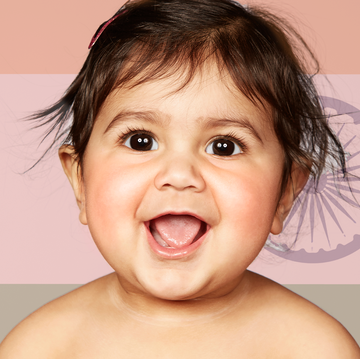June is LGBTQ+ Pride month! This time of year, in the midst of the parades, celebrations and commemoration, you'll likely see rainbows and other LGBTQ+ marketing show up on storefronts, churches, banks, billboards, social media accounts and more. And while it's great that the queer community is finally enjoying long overdue visibility, some of what you'll see is "rainbow washing" — a term to describe superficial LGBTQ-friendly gestures meant to elicit positive feelings about a brand in order to sell something, with no real support going to the community.
What you hope to see from companies, churches and other groups is genuine allyship that extends beyond the days of June. After all, advocacy for the LGBTQ+ community is important year 'round. Rainbow washing capitalizes off of queer people without tangibly supporting LGBTQ+ equity, acceptance or inclusivity. “It's exploitative and disingenuous when not accompanied by authenticity, action or intention that supports our community,” says Cathy Renna, Communications Director for the National LGBTQ Task Force.
However, not all companies rolling out the Pride flag in June are rainbow washing. Some brands use profits from Pride collections to make donations supporting the LGBTQ+ community. For instance, The Trevor Project's suicide prevention organization for LGBTQIA+ youth received a $25,000 donation from TEVA’s Pride collection and $400,000 from Abercrombie & Fitch.
Nike sold "Be True" sneakers in tandem with donating $625,000 to LGBTQIA+ grant recipients in 2021. LEGO launched the “Everyone Is Awesome” set with a list of LGBTQ+ partner charities. Apple has a "Pride Edition" Apple Watch wristbands, and has an openly gay CEO with a proven track record of supporting LGBTQ+ causes and opposing anti-LGBTQ+ legislation.
And to help you understand more about rainbow washing, how to avoid it as a consumer and how it can be dangerous, we're breaking it all down below.
What is rainbow washing?
Much like greenwashing and pinkwashing, rainbow washing occurs when companies mislead well-intentioned consumers through marketing. For example, in June, a brand may change their social media avatar to incorporate rainbow colors, run advertisements featuring same-sex couples and sell branded rainbow merch. Surface-level marketing that doesn’t support queer staff or consumers is considered rainbow washing.
“Corporations use the symbols of the LGBTQ+ community to give the impression that they’re aligning with the LGBTQ+ community when they actually may give money to anti-LGBTQ+ organizations and political campaigns. They don't hire or support LGBTQ+ employees, and aren't giving money to the queer community,” says Lindz Amer, queer author of Rainbow Parenting.
How is rainbow washing harmful?
Rainbow washing distracts from the true meaning of Pride — a protest against discrimination. “Reducing our diverse community to a “market” marginalizes the underrepresented,” Renna says. Rainbow washing perpetuates harmful stereotypes about the LGBTQ+ community by presenting them as a monolith — that is, a nondescript group without variations in thought, opinion or need — which further marginalizes while reinforcing prejudices against the queer community.
Keywords such as “love is love” and queer imagery can create a false sense of allyship and mislead consumers. When companies co-opt queer symbols and language as simply marketing ploys there are no tangible benefits for LGBTQ+ folks. Instead, it diverts sales away from genuinely LGBTQ+-owned businesses. "Using our community's symbolism to make money hurts the queer community because it's directly taking money out of the pockets of LGBTQ+ people,” Amer says.
Worse, corporations that rainbow wash sometimes make financial donations to anti-LGBTQ+ political candidates that vote against pro-LGBTQ+ legislation. “Rainbow washing is duping consumers into thinking corporations are supporting the LGBTQ+ community. Often, it's covering up that they're doing the exact opposite and doing harm,” Amer says.
How to avoid buying from companies that rainbow wash
One way to steer clear of rainbow washing is to buy Pride gear directly from LGBTQ+ creators. “Look for queer and trans-owned small businesses and for companies that use queer and trans people to advertise their Pride products. Skittles hired queer and trans illustrators to design bags and put money into small queer businesses,” Amer says. Other LGBTQ+ supportive brands included Wildfang, Dr. Botanicals, Remy wines and others.
When buying from a major corporation, another way to watch out for rainbow washing is by confirming the brand makes contributions to organizations that support the queer community, such as The Trevor Project, National LGBT Chamber of Commerce, ILGA, GLSEN, Out and Equal, GLAAD or the Trans Lifeline. “Donations are a good indicator that they have an allyship with the queer community,” Amer says. And, on the other side of the coin, check the company's political donations. Some big box stores, for example, sell rainbow-themed products, but are also major donors to lawmakers who support anti-LGBTQ+ legislation. “If you're putting a rainbow flag on your logo, and then you're donating to ultra conservative campaigns, that's actively harming our movement towards queer liberation,” Amer says.
Renna suggests researching if the company has LGBTQ+ employees, pro-LGBTQ+ internal policies, relationships with LGBTQ+ organizations and year-long commitments to LGBTQ+ causes. “Allyship is about showing up in places other than the cash register. Internal partnering to educate the workforce, creating safer spaces for LGBTQ+ employees, public support of legislation and actions that advance LGBTQ rights, and opposition to those that hurt us are vital,” she says.
..













